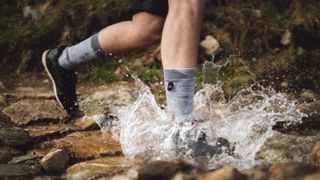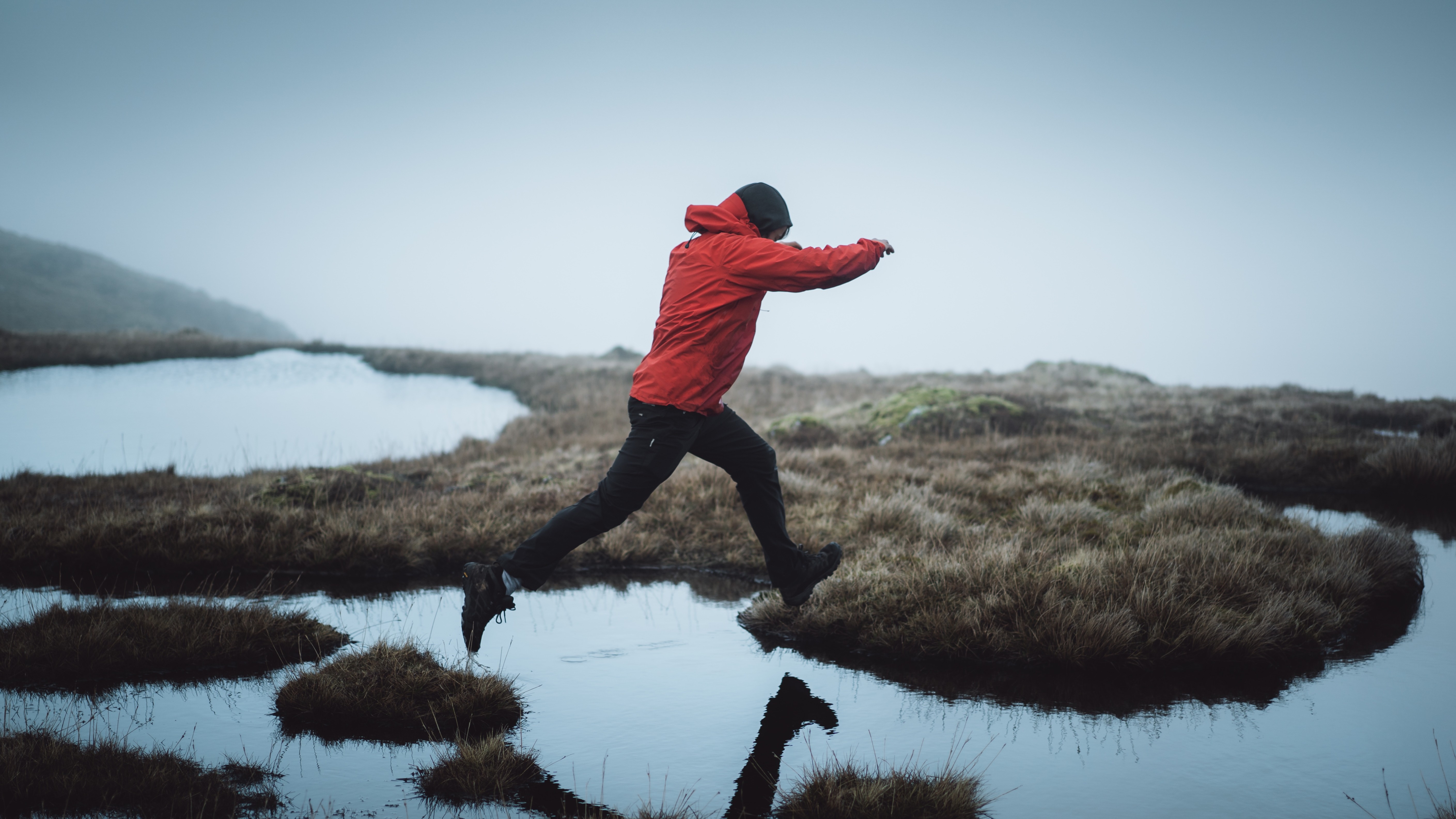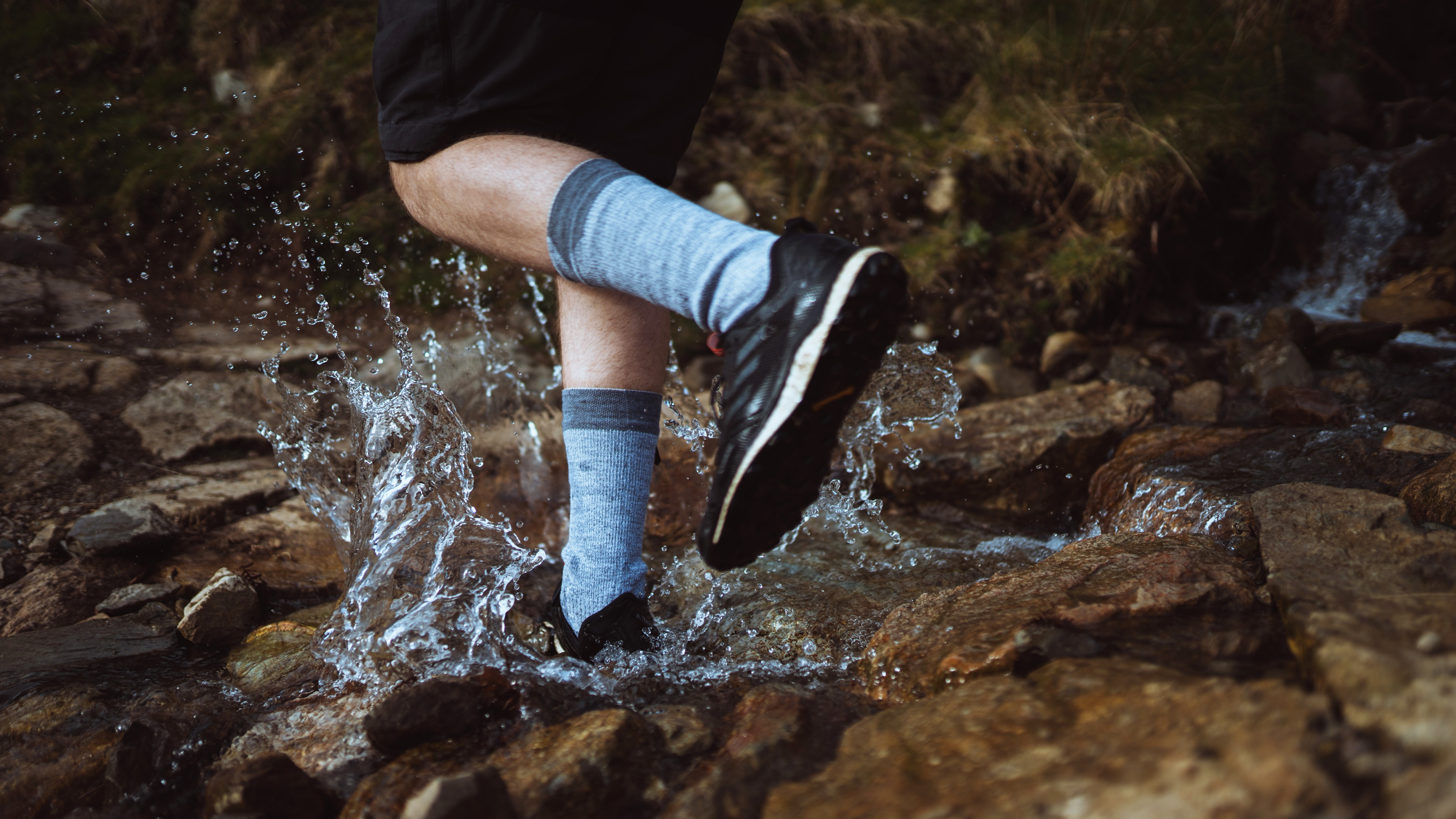Sealskinz Thick Lined Walking Socks Uk Waterproof

It can feel a bit endless, putting together a required kit list just to go for a walk. First you invest in the best hiking boots, with a breathable-waterproof liner made from Gore-Tex (and gold, presumably, looking at the price of some of them). Then you get a good waterproof jacket, and some gaiters if the terrain is harsh. Now, for best hiking socks, which those in the know reliably inform you are every bit as important as your boots.
Inevitably, the outdoor sock selection is baffling huge and the price variance wildly wide. And up at the top end of the range are waterproof socks. But really? Shouldn't those expensive hiking boots you've just bought keep cloud and trail juice out?
Firstly, you can be forgiven for asking this fundamental question: are waterproof socks actually, really, genuinely, truly waterproof, or is it all simply another marketing ploy to get you to spend more money on kit? (And, by the way, these socks are not typically cheap.)
- Learn how to stay dry while hiking with our watertight tips
- Getting ready for a trek? Here's what to wear hiking
The quick answer to that question is yes – if you invest in a pair of waterproof socks made by a decent brand, such as Sealskinz, then they will definitely be waterproof.
Some top-end brands will supply information such as the hydrostatic head rating of their socks – this number relates to the height of a column of water that could be positioned on the fabric before it lets any moisture through, and it will have been scientifically tested. ArcticDry Socks for example, are designed to be able to withstand a hydrostatic head greater than 10,000mm, which is better than most tent flysheets.
There are two types of waterproof sock: oversocks, which, as the name suggests, go over the top of your regular socks, and are usually made with a waterproof/breathable Gore-Tex membrane. Popular with cyclists, you will often see oversocks that cover the entire shoe and provide effective protection for the whole foot in even the worst weather – but this obviously isn't practical for trail hikers and runners, whose feet come into constant contact with the rough surface, which would quickly destroy the technical fabric of the sock.
Much more widely used by trekkers and trail runners (and skiers, snowboarders, snowshoers, kayakers, canoeists, SUPers and even surfers), are waterproof socks designed to be used on their own – i.e. without any other sock – beneath outer footwear.
These waterproof socks work by employing a three-layer construction technique. There's typically a coarse and hardwearing material, such as nylon, on the outside, and on the inside, next to the skin, will be a softer, gentler layer, like merino wool or some fleecy fabric. Sandwiched in the middle is the all-important hydrophillic membrane, which, as well as making the sock waterproof by repelling water attempting to come in from the outside, also allows your feet to breathe, and wicks any internally created moisture (sweat) away.

So, next query – why and when would I need to use such a sock, especially when my pricy hiking boots are supposed to be waterproof? It's a good question, and there are several answers to it.
Boots and shoes are, of course, only waterproof up to the top of the cuff. No matter how good they are, once water or snow seeps in over the top, you're going to have wet feet. Unless, that is, you've got a pair of good-quality waterproof socks pulled up to near your knees – then your toes should still be nice and dry.
On hiking and running routes when you're likely to encounter multiple stream or river crossings, sodden grass and undergrowth, or any amount of snow, waterproof socks will supply an extra level of insurance.
Also, boots and shoes do occasionally fail, especially when they're getting older, and when they do, having a pair of waterproof socks on underneath will feel like the best decision you have ever made. If you're unsure about how fighting fit your boots are, packing a pair of waterproof socks is a good way to get some peace of mind.
Plodding around in wet socks isn't just uncomfortable – it can lead to blisters that will make a hiking experience miserable. And, in some conditions, having dry feet isn't a luxury – it's a life saving benefit. The same technology that makes the socks waterproof also make them windproof, and the thermal properties are extensive too. Happiness is having warm feet, especially in extreme conditions, when the alternative can lead to serious health and safety concerns.

On the downside, some socks in this category rustle. Also, with the three-layer construction, waterproof socks can be significantly thicker than other hiking socks, so please make sure they fit well with your boots. They're typically a relatively expensive investment (for socks), so you will want to be able to use them comfortably.
In addition, despite what they say, many waterproof socks are simply not as breathable as ordinary hiking socks, so you will experience a greater degree of sweatiness. As this excellent article by REI about all-sorts of sock categories points out, your feet are one of the sweatiest places on your body, with each one boasting 250,000 eccrine sweat glands. Moisture that comes from the inside of your socks can be problematic too – so make sure you take socks off, turn them inside out and air them as often as you comfortably can (when you're snugly ensconced in a tent or hut, for example).
And, even when they are truly breathable – and the leading brands do now perform much better in this department – the three-layer construction means they will run much warmer than traditional walking socks. This can be a benefit in some conditions, but a downside in others.
Technical waterproof socks do require a little bit of extra aftercare too. Always read the washing instructions carefully, and at a minimum turn the socks inside out before bunging them in the machine (otherwise they'll keep the water out… duh!).
In conclusion, we believe waterproof socks are an excellent (essential, even) piece of equipment to have in your kit locker for trail hiking and running on some occasions. In really wet and wintery landscapes, especially when you're out for several days and adventuring at altitude or in icy climes/times – they are worth their weight in gold. But, worn in warmer, less challenging conditions, they're going to be overkill, potentially creating some sweaty discomfort.
For skiers, snowshoers and snowboarders, the benefits are very clear. Kayakers, canoeists, SUPers and surfers can get some benefit from waterproof socks, although most will simply use neoprene booties to protect feet and keep toes warm.

Writer, editor and enthusiast of anything involving boots, bikes, boats, beers and bruises, Pat has spent 20 years pursuing adventure stories. En route he's canoed Canada's Yukon River, climbed Mont Blanc and Kilimanjaro, skied and mountain biked through the Norwegian Alps, run an ultra across the roof of Mauritius, and set short-lived records for trail-running Australia's highest peaks and New Zealand's Great Walks. He's authored walking guides to Devon and Dorset, and once wrote a whole book about Toilets for Lonely Planet. Follow Pat's escapades here.
Sealskinz Thick Lined Walking Socks Uk Waterproof
Source: https://www.advnture.com/features/should-i-buy-waterproof-socks
0 Response to "Sealskinz Thick Lined Walking Socks Uk Waterproof"
Postar um comentário